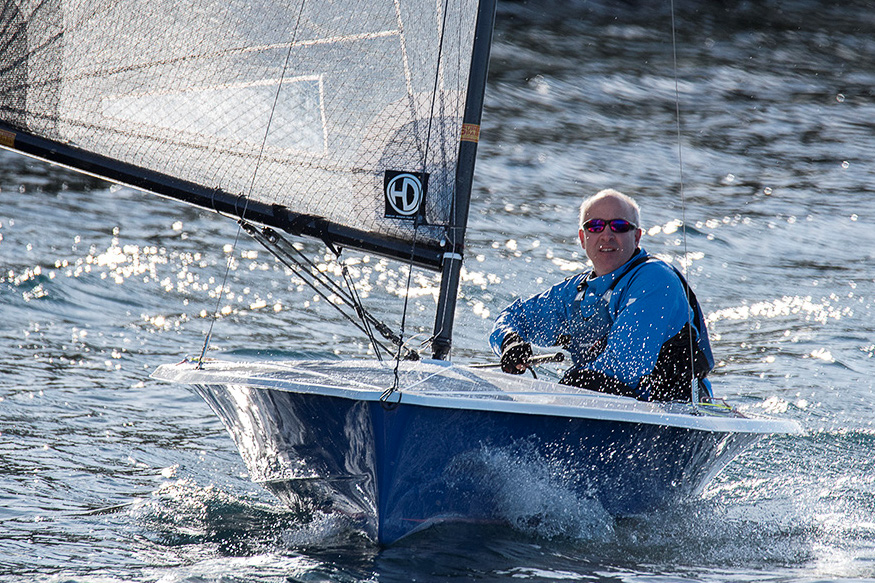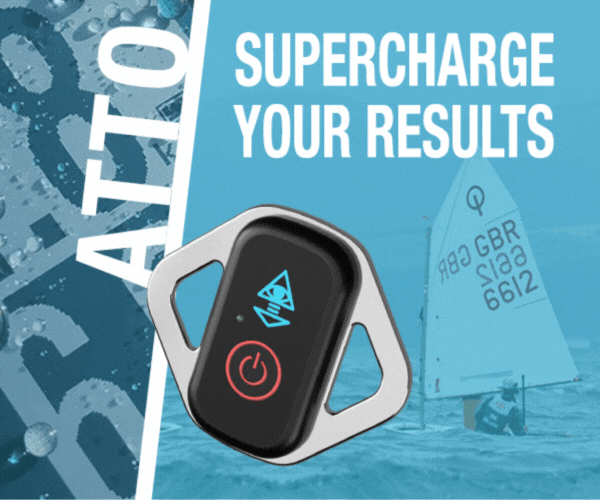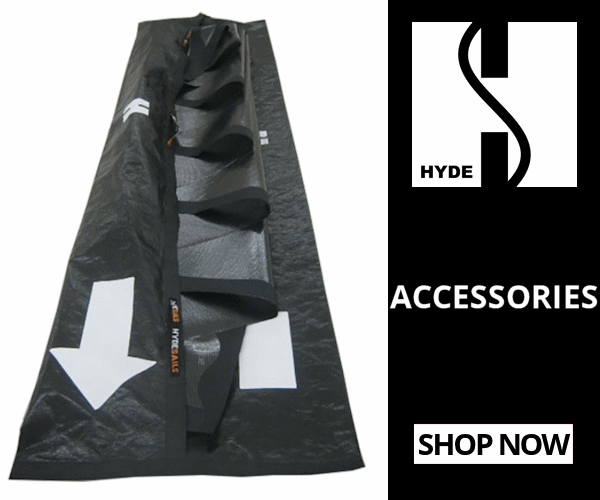Square tops |
Post Reply 
|
Page <12345 13> |
| Author | |||
eric_c 
Far too distracted from work 
Joined: 21 Jan 18 Online Status: Offline Posts: 382 |
 Post Options Post Options
 Quote Quote  Reply Reply
 Topic: Square tops Topic: Square topsPosted: 08 Jun 22 at 9:12am |
||
|
The H2 has a PN of 1034? The Phantom, with almost no roach at all, 1004. Blaze with a big round roach, 1033. Dzero 1029 It's not looking like sailing's answer to nitrous oxide is it?
|
|||
 |
|||
CT249 
Far too distracted from work 
Joined: 08 Jul 06 Online Status: Offline Posts: 399 |
 Post Options Post Options
 Quote Quote  Reply Reply
 Posted: 08 Jun 22 at 9:17am Posted: 08 Jun 22 at 9:17am |
||
|
[/QUOTE] Square tops are in a sense just a modern interpretation of the traditional gaff rig. But is it only carbon masts that they work with, that can flex and produce the desired 'gust-response'.... or can they work with aluminium/much stiffer spars? Or could batten technology ensure that they do? (spring loaded battens!)...... [/QUOTE] With respect; I"ve spent a lot of time researching design history, and there seems to be little evidence that squaretops and gaffs have much to do with each other at all. The traditional gaff rigs almost never used gust response in anything like the way we do, and that comes from a LOT of reading of books and articles from the 1800s and early 1900s. The gaff's advantages were due to low centre of effort, fewer problems in keeping the stick aloft and things like that. After reading many hundreds of pages (my mag collection dates back to 1894) I can find no information that indicates that gust response was seen to be better with gaffs than with contemporary bermudans. The gaff rigs were almost always low aspect, whereas squaretops tend to be fairly high in aspect ratio. The gaffs normally had too much twist, way more depth than we use, and were sailed at wider angles of attack upwind and downwind. In cats like the Taipan 4.9, which has a very big and stiff wingmast even for a cat, the former large roach gave way to a squaretop over a decade ago, and the class opinion was that the gust response was very much better. To give an idea of the stiffness of the 4.9 mast, Glenn Ashby (who was a champ in them before he was famous) told me that the mainsheet load on the 96kg 16' Taipan 4.9 was higher than that of the vastly larger Tornado - and yet the very flat squaretop on the 4.9 gives good gust response. You don't need much movement when the head is already very, very flat. Incidentally the Taipan's co-designer Greg Goodall is credited by many (like sailmaker Ben Hall in an old article in US mag Sailing World) with introducing the true squaretop in an A Class that his brother used to win the worlds in back in the '80s. Greg followed on by also winning two world titles in the class, but if I recall correctly he reckons the increase in squaretop area is (like so many things) largely down to improved materials that allow sailmakers to make sails that don't distort and therefore suffer from leaches that either blow open or slam shut. I haven't seen him in years so this is just from memory. Edited by CT249 - 08 Jun 22 at 9:51am |
|||
 |
|||
CT249 
Far too distracted from work 
Joined: 08 Jul 06 Online Status: Offline Posts: 399 |
 Post Options Post Options
 Quote Quote  Reply Reply
 Posted: 08 Jun 22 at 9:22am Posted: 08 Jun 22 at 9:22am |
||
Nope, or not from my experience owning and sailing a couple of them. The cat don't need as much gust response as their higher upwind speed means that a gust is a lower percentage of apparent windspeed. They also (as far as I can recall) use flatter sails than skiff types, so it needs actual less twist and mast bend to create a similar depowering effect. I've never seen my F16 or F18 clew rise or come in to windward, personally. The mainsheet loads are way too high. We took the mainsheet off our old 20' cat and stuck it on the 36' 5 ton offshore mono we have, and it's easier to work on that than it was on the cat! The proof may come in A Class cats. They have had extremely light carbon wingmasts, rather than stiff alloy rigs, for eons. Despite the fact that they could probably design in as much bend as they want (ie by shifting from carbon to 'glass etc) they have extremely straight masts - so straight that they don't use halyards at all but just push the sail straight up the mast from the bottom because there is basically no luff curve to create resistance. But (AFAIK) the mainsail chord is so flat that the minimal amount of mast bend created by downhaul pressure is enough to completely flatten the sail when needed. Mono sails are still deeper (AFAIK) so have more draft to be taken out so need more mast bend. This is just my belief and there are many people who know much more; I'll grab one of them when our season starts again.
Edited by CT249 - 08 Jun 22 at 9:42am |
|||
 |
|||
CT249 
Far too distracted from work 
Joined: 08 Jul 06 Online Status: Offline Posts: 399 |
 Post Options Post Options
 Quote Quote  Reply Reply
 Posted: 08 Jun 22 at 9:37am Posted: 08 Jun 22 at 9:37am |
||
I bought another Tasar the other week, just to sell it within the club in the hopes of generating more boats. Unlike our good Tasar, it only had dacron sails. We took it out for a race to see how it went and it was very interesting to drop back into dacrons from the flatter, bigger, roachier Mylar sails the class now has. The old deep dacron main required vastly more mainsheet and traveller work in gusts to keep the correct amount of twist. The mylar's bigger roach and larger, flatter shape has far more gust response and it was a shock to go back to the old way. IMHO the fleet closed up with the Mylar sails because they required less work to optimise twist. BUT..... the Mylars stay in top "championship podium" shape for longer and then lose structural integrity far faster. The old dacron sails, unless flapped and crunched, can't be killed with a stick. The Mylars, no matter how well cared for, will tear a decade or so before dacrons would start to lose any noticeable strength. I'm still far from sure that moving to Mylar was the correct choice for the class overall. It's not conservatism (I've had Mylar sails for decades, and love my amazing membrane yacht headsails to bits) but as you imply, for a SMOD the durability of less-stressed pinhead dacron sails makes a lot of sense.
|
|||
 |
|||
H2 
Really should get out more 

Joined: 26 Jul 17 Online Status: Offline Posts: 750 |
 Post Options Post Options
 Quote Quote  Reply Reply
 Posted: 08 Jun 22 at 9:41am Posted: 08 Jun 22 at 9:41am |
||
I don't think I have ever considered the sail shape on the H2 to be about maximising speed as such, its a concept that tried to balance out all the factors that people wanted from the boat. But as you raised it the H2 sail area is 9.3 sqm and the Blaze is 10 sqm and we sail off virtually the same PY and are similar lengths and widths so I would say that in this case the H2 rig would seem more efficient than the blaze one.
|
|||
|
H2 #115 (sold)
H2 145 OK 2082 |
|||
 |
|||
ChrisI 
Posting king 

Joined: 09 Aug 10 Location: United Kingdom Online Status: Offline Posts: 143 |
 Post Options Post Options
 Quote Quote  Reply Reply
 Posted: 08 Jun 22 at 10:07am Posted: 08 Jun 22 at 10:07am |
||
Thanks for your real life experience (I am not a cat sailor). The point about relative speeds and angles makes complete sense - i.e. travelling at such speeds they don't need it. And re the A Class and ultra straight masts - I guess that shows they are experiencing the flip side of 'gust response' which is lost energy from the wind, which they don't want. |
|||
 |
|||
eric_c 
Far too distracted from work 
Joined: 21 Jan 18 Online Status: Offline Posts: 382 |
 Post Options Post Options
 Quote Quote  Reply Reply
 Posted: 08 Jun 22 at 10:25am Posted: 08 Jun 22 at 10:25am |
||
I think to some extent modern materials mean the flexing is better handled in the battens and sails than the topmast.
|
|||
 |
|||
ChrisI 
Posting king 

Joined: 09 Aug 10 Location: United Kingdom Online Status: Offline Posts: 143 |
 Post Options Post Options
 Quote Quote  Reply Reply
 Posted: 08 Jun 22 at 10:27am Posted: 08 Jun 22 at 10:27am |
||
Thanks for this. This is exactly where we are - exploring how one uses a square top in light winds and where I guess those Punts with square tops are. I think we were (although very happy to stand corrected) one of the first modern monohull dinghy designs to use square top rigs in a lighter wind boat (I don't count A Raters as a dinghy  .) On the Thames in tide and with regular huge shifts in wind direction kicker control is critical but as per my OP bendy 'gust response' masts are important too. We still have lots to learn. .) On the Thames in tide and with regular huge shifts in wind direction kicker control is critical but as per my OP bendy 'gust response' masts are important too. We still have lots to learn.Edited by ChrisI - 08 Jun 22 at 10:36am |
|||
 |
|||
eric_c 
Far too distracted from work 
Joined: 21 Jan 18 Online Status: Offline Posts: 382 |
 Post Options Post Options
 Quote Quote  Reply Reply
 Posted: 08 Jun 22 at 10:30am Posted: 08 Jun 22 at 10:30am |
||
|
|||
 |
|||
eric_c 
Far too distracted from work 
Joined: 21 Jan 18 Online Status: Offline Posts: 382 |
 Post Options Post Options
 Quote Quote  Reply Reply
 Posted: 08 Jun 22 at 10:34am Posted: 08 Jun 22 at 10:34am |
||
Or maybe the hull design is significant, the Blaze having a lot of wetted surface and a generally 1990s air about it? not to mention being made out of slate.
|
|||
 |
|||
Post Reply 
|
Page <12345 13> |
| Forum Jump | Forum Permissions  You cannot post new topics in this forum You cannot reply to topics in this forum You cannot delete your posts in this forum You cannot edit your posts in this forum You cannot create polls in this forum You cannot vote in polls in this forum |
Bulletin Board Software by Web Wiz Forums® version 9.665y
Copyright ©2001-2010 Web Wiz
Change your personal settings, or read our privacy policy
Copyright ©2001-2010 Web Wiz
Change your personal settings, or read our privacy policy

























 Printable Version
Printable Version Delicious
Delicious Digg
Digg Facebook
Facebook Furl
Furl Google
Google MySpace
MySpace Newsvine
Newsvine reddit
reddit StumbleUpon
StumbleUpon Twitter
Twitter Windows Live
Windows Live Yahoo Bookmarks
Yahoo Bookmarks Topic Options
Topic Options